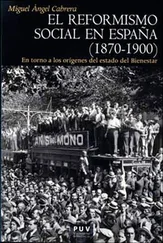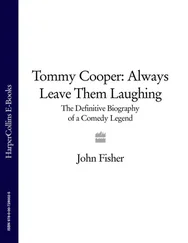My gender analysis deals with a variety of topics. From sexuality and reproduction to role production and definition, this section tries to understand Mormonism from a feminist perspective as well as feminism from within a Mormon context. Motherhood and the restriction of women to nurturing and mothering roles are fundamental for the understanding of Mormon society as patriarchal. They will also be significant elements to be considered when analyzing the essence of Barber’s literature.
Through Barber’s fiction and recollections, I analyze gender issues from a sociological point of view, because, as Marianne Hirsch proposes, sociology is a good method of analysis: “it concentrates on sex-role differentiation, where it attempts to distinguish between the individual and the roles she has to assume, and where those roles are studied in relation to their social determinants” (202). Nancy Chodorow says that “women in our society are primarily defined as wives and mothers, thus in particularistic relation to someone else, whereas men are defined primarily in universalistic occupational terms” (178), an idea which accords with Adrienne Rich’s theory that “a ‘natural’ mother is a person without further identity” (22). In fact, Chodorow’s theories propose a psychoanalytic textual interpretation, with attention to gender issues; the family; mother-daughter relations; and father-daughter relations. In Mormon culture, motherhood as a role is sustained by an ideological discourse that promotes a certain division of duties and authority within Mormon culture. In the second half of the 20 thcentury, it was proposed that the mothering role was a source of signification for women on a par with that of priesthood for men: “this emphasis stresses—even magnifies—the differences between the sexes rather than expanding the roles of both” (Kewell 42). Because gender roles are, in a Mormon community, promoted equally for men and women, I also take a look at male gender roles, and how these are stimulated in society. As Chodorow states: “[B]oys are taught to be masculine more consciously than girls are taught to be feminine” (176). Mormon masculinity, as David Knowlton shows, is formed by standards that follow American masculinity, but with slight changes (Knowlton 23). Relying mostly on the character of Alf Jensen in Barber’s novel, I analyze how these standards provoke tension and conflicts when they need to be fulfilled or rejected. Even at the end of the novel, both Alf and Esther Jensen address social roles ironically when they are reunited and they try to perform those roles again: “the model mother. The model wife. Alf was also a model husband, home on time, attentive to the children, mild mannered” (Barber, Desert 208). Evidently, any critical theory needs to be clarified when used in a Mormon context. Barber’s literature reveals a complex approach to these topics, determining a level of approximation and conclusion that complicates Chodorow’s ideas.
To study gender issues within a Mormon context requires a mandatory exploration of how relationships have been devised and institutionalized. In other words, family and marriage must be viewed from a perspective that considers social, political and cultural intervention. Family plays a fundamental role in Mormon history and, in Barber’s writing, marriage becomes a suitable backdrop against which to examine many of the matters that I have just listed. Accordingly, both family and marriage have a place within this book. As Carrie A. Miles states, “in retrospect it is clear that in the latter half of the twentieth century, marriage, family, and gender relations underwent their most significant changes in human history, causing problems not just for the LDS Church but for the entire developed world” ( LDS 2). 9In debating the origins of the historic social division of labor, Miles says that Mormons before the Industrial Revolution, whose economy was based on agrarian resources, “were subject to the same forces shaping the family as their more conventional neighbors” ( LDS 4). In Mormon culture, these concepts are so integral to the nature of their religion that they stick to the flesh of their members as if they were more than mere cultural constructs, set up for the benefit of an economic system. They are somehow rooted in the theological philosophy originated by Joseph Smith. His ideas about progress and exaltation, operative through projects called the “Plan of Progression,” “Great Plan of Happiness” and “celestial marriage” and aimed at the achievement of that exaltation that elevates a man from manhood to godhood (Miles, LDS 5), are key points that must be considered when talking about gender roles in a Mormon context.
Mormon involvement with environmental issues and its relationship to landscape goes beyond the substantial praise awarded to Mormon watering systems, or the emphasis on the spiritual covenant that Mormon faith had with nature, in which, by the way, Donald Worster sees “a deep contradiction” (413). From the days of Brigham Young, Mormons have always had a long history of aiming for sustainability and believing in a stewardship that forces them to be faithful to nature: “our stewardship toward the earth becomes our humility” (Williams, New x). As I say, there are other aspects that I need to consider when analyzing space, place or landscape in Barber’s literary work, and even more so because this analysis is framed within a Mormon context. Mormons were also defined as a group through their relationship to the land they chose to settle, and in Barber’s fiction and autobiographies, landscape actively participates in her search to configure her identity.
In thinking about place , it is significant that Barber’s rendition of space and landscape is mainly related to an urban setting. This comes as no surprise because many years have passed since Walter Prescott Webb first used the term “oasis civilization” (25) to explain—along with Stegner and other scholars—that the American West “must be eighty percent urban” (Stegner, Stegner 148). Thus, the role of the city of Las Vegas, or the construction of the Hoover Dam, will be highly significant when analyzing Barber’s books. Nevertheless, there are several dimensions that deserve attention in this study of the relationship between the writer—or her characters—and the physical surroundings. A feminist analysis of landscape affords a fruitful opportunity for exploring the inner development of female characters, for instance. Glenda Riley observes a difference between male and female perceptions of nature: “female nature writers perceived the environment as accommodating and welcoming, especially of strong, independent women willing to meet nature’s challenges” (66-67). Riley states that “contemporary ecofeminists usually indict the white patriarchy and its values for dominating and damaging both women and the physical world” (173). This notion will have an important function in my analysis of male and female characters in And the Desert Shall Blossom , and it shares the same spirit that I apply in other sections of my analysis, thus displaying the interrelated nature of all these sections into which I have decided to divide my exploration.
This section also accommodates the necessary room in which to gather and contemplate in detail the frequent references to Mormonism and the American West that naturally requires attention in the context of this study. In previous sections, this topic is approached from a global panorama. Mormon experience of the American West offers a unique approach to the American West and reinforces contemporary ideas about the complex and many-sided nature of the American West. In this section then, I specifically explore Barber’s writing from this angle.
Читать дальше












